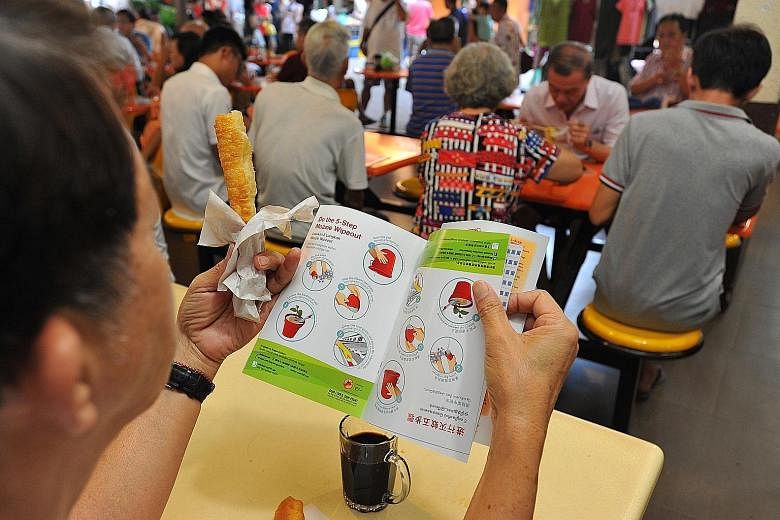Two-thirds of mosquito breeding sites are found in homes while the rest are in common areas and construction sites, said Minister for the Environment and Water Resources Masagos Zulkifli yesterday, as he urged Singaporeans to remain vigilant in the fight against Zika.
He added that the mosquitoes have adapted very well to the environment and "they know where to find water as much as we hide it".
Mr Masagos was speaking after an outreach event at his constituency in Tampines, where he was handing out Zika fliers together with other MPs. "It's not because our home owners don't know the danger of mosquitoes breeding at home," he said, but some don't realise the extent they have to go to - for instance, they don't change the water in vases, which can then become a breeding site.
Over at Yew Tee, MP for Marsiling-Yew Tee GRC Alex Yam also handed out mosquito patches and repellent to more than 1,000 residents in the area.
And before handing out fliers to Pasir Ris residents yesterday, Deputy Prime Minister Teo Chee Hean said that eradicating the mosquitoes and their breeding sites remains the most effective and efficient way of reducing the incidence of Zika.
"If you look at what WHO (the World Health Organisation) has said, I think that is a good marker. They indicated that the way we have dealt with Zika is actually a model for other countries - which is a good collection of information, good dissemination of information, attacking the problem in the correct way," he added.
Mr Masagos stressed that everyone must do his part in the fight against Zika. "It's the community involvement that will be key to us being successful. Therefore, owners of premises, whether they are construction sites, whether they are homes, whether they are dormitories - everyone has a role to ensure that we do the right thing to prevent breeding from happening."
He also said that the Ministry of Health has done very well to inform the public that Zika is a mild disease.
"Symptoms of this disease are not as bad as dengue," he noted, adding that while there is concern over infected pregnant women giving birth to babies with microcephaly, or abnormally small heads, it is important to get the facts right and listen to experts.
On Friday, the WHO said that Singapore was a role model for countries in its handling of Zika cases, and praised the level of transparency shown here. Its outbreaks and emergencies head Peter Salama highlighted the work Singapore has put in to track and contain Zika's spread. This included lab work and public health work, including vector control.
MOH yesterday revealed a dip in new infections for the first time since Monday, with 26 more people coming down with Zika, bringing the total to 215 cases.
As of Friday, 57 breeding habitats - comprising 32 in homes and 25 in common areas and other premises - have been detected and destroyed in Aljunied Crescent, Sims Drive, Paya Lebar Way and Kallang Way.
Madam Justina Low, who received a flier from Mr Masagos at Tampines yesterday, said the Zika outbreak has made her even more mindful of looking out for stagnant pools of water. "I spray repellent and make sure that the areas are all dry," said the 62-year-old, who runs an apparel and electronics shop in that area.


